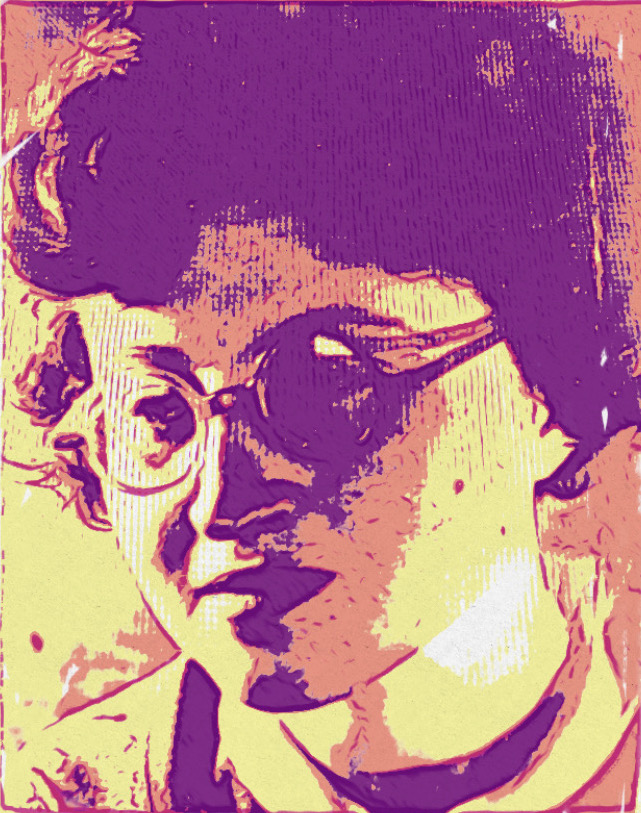We know that in addition to Hannes Meyer and Hans Wittwer, numerous Bauhaus students were also involved in the planning and realization of the Trade Union School: Arieh Sharon, Hermann Bunzel, Lotte Beese, Thomas Flake, Konrad Püschel, ... to mention only a few by name. But if we take a look inside the school, many questions still remain, the most obvious of these being: How much Bauhaus is there in the Bauhaus?
After some research it is evident that someone connected to the Bauhaus was responsible for the interior design of the Trade Union School – a training facility for trade union official – more precisely: a female someone from the Bauhaus, specifically Wera Meyer-Waldeck. It is a name that has thus far received little attention in Bauhaus design literature. Most publications portray a sterile, tubular-steel atmosphere at the Bauhaus – a perception that simply ignores the actual versatility of Bauhaus furniture and seeks to convey the existence of a “Bauhaus style.” But no such thing existed as those connected to the Bauhaus were themselves aware.
But back to Wera Meyer-Waldeck and her responsibilities at the Trade Union School in Bernau-Waldfrieden. During Meyer-Waldeck’s apprenticeship as a carpenter that she began in 1927 at the Bauhaus under the direction of Marcel Breuer, Hannes Meyer was appointed director and thus successor to Bauhaus founder Walter Gropius. Under his tenure a lot would change at the Bauhaus: women were also allowed to study in the construction department and, like their fellow male students, were seen as researchers and innovators. Hannes Meyer saw the potential of women and utilized this to realize his ideals: learning at the Bauhaus – hands-on experience from building.
Wera Meyer-Waldeck also took advantage of this newly gained flexibility and began studying architecture at the Bauhaus. Meanwhile, Hannes Meyer founded a construction office bearing his name in Berlin specifically for completing and overseeing the construction of the Trade Union School. Wera Meyer-Waldeck also worked here during an outside semester as a furniture designer on furnishings for the Trade Union School and staff residences. Hannes Meyer confirmed her employment in his construction offices from September 15, 1929 to April 15, 1930 in a letter dated July 14, 1930:
“during this time she [Wera Meyer-Waldeck] was responsible for most of the furniture and interior design, as well as procurement of all furnishings for the new construction of the general german trade union federation school in bernau near berlin. under the direction of the signatory below, she was responsible in particular for drafting the final design plans of furnishings for the school and library rooms, guest and staff rooms, dining hall, lounges, built-in furniture, and standard kitchens for the six employee residences.”
No records corroborate whether Wera Meyer-Waldeck, alone or as part of a team, made the final decisions on the furnishings for the ADGB Trade Union School nor can this be verified by any documents. In addition, the question of whether her work at the Berlin construction office was remunerated or considered a hands-on semester cannot be determined. Her name is not included on preliminary Bauhaus furniture design plans for the Trade Union School, nor does Hannes Meyer mention her in publications on the Trade Union School. Only her Bauhaus diploma and a copy of a letter from Hannes Meyer to Wera Meyer-Waldeck from a collection of files on the architect at the Bauhaus Archive in Berlin attest to the fact that she collaborated on the interior design of the Trade Union School.
In 1932 Wera Meyer-Waldeck was the first woman in Thuringia to take the exam to become a carpenter’s assistant. After her time at the Bauhaus, where she ultimately also completed a diploma as an architect with her design of a kindergarten (she was a trained kindergarten teacher and was therefore familiar with the conditions and requirements), she first worked as an interior designer (e.g. for the German Bundestag in Bonn and the Federal Chancellery), then also as an architect in Bonn and Kassel. She followed the path she started at the Bauhaus until the end and achieved great success.

